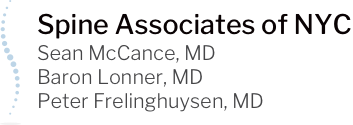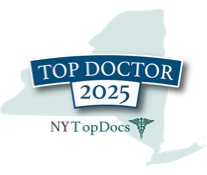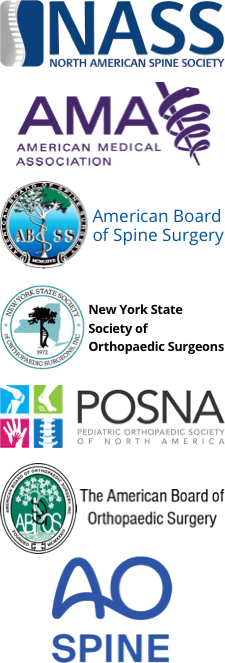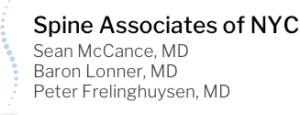Last week, I posted about herniated discs in the cervical spine (or neck), but herniated discs can also occur in the lumbar spine (low back). Often times, patients suffering from a herniated disc in the lumbar spine are in the 30 – 40 year old age range. Many of the patients that I treat have injured their back from sporting or lifting incidents, but sometimes the injury occurs just from routine activities like bending over to pick up an object on the floor.
According to the American Academy of Orthopaedic Surgeons, low back pain affects four out of five people; therefore a herniated disc in the lumbar spine can go unnoticed. It is especially important for patients to visit their doctor or a specialist if their low back pain persists longer than 2 weeks or starts to radiate down the leg.
Although pain is the first and most noticeable symptom of a herniated disc in the lumbar spine, the severity of the pain depends on which disc is injured and the extent of the herniation. In some cases, the pain may spread over the buttocks, down the back of the thigh and into the calf. The pain may be in one leg (which is more common) or both legs. The symptoms of a herniated disc in the lumbar spine include:
- Nerve pain down the leg, associated with buttock pain or back pain
- Numbness, tingling (a “pins-and-needles” sensation) or weakness in the legs or feet
- In severe cases, foot drop (floppy foot control) and/or trouble with bowel or bladder control
Similarly to the treatment of a herniated disc of the cervical spine (neck), non-surgical treatment options are typically recommended first for those suffering from a herniated disc in the lumbar spine. In addition to bed rest, medication and decreasing physical activity, certain exercises may also be helpful in order to strengthen the back and abdominal muscles.
Should the pain become worse, or if neurological symptoms develop, we most commonly recommend a micro discectomy. This is the removal of the fragments of the herniated disc through a small incision, which is less invasive. These surgeries typically take under an hour to do, and patients can go home the same day or the next day. Many patients are back to work in a few days, or 1-2 weeks, depending on the type of work.
Although treatment options vary from patient to patient, one thing is clear – patients who are treated properly have quicker recovery. With so many people in the world suffering from low back pain, proper diagnosis and management is a critical step.
For more information about herniated discs, please visit my website “Conditions” page at: https://mccancemd.com/conditions/herniated-disc/.










